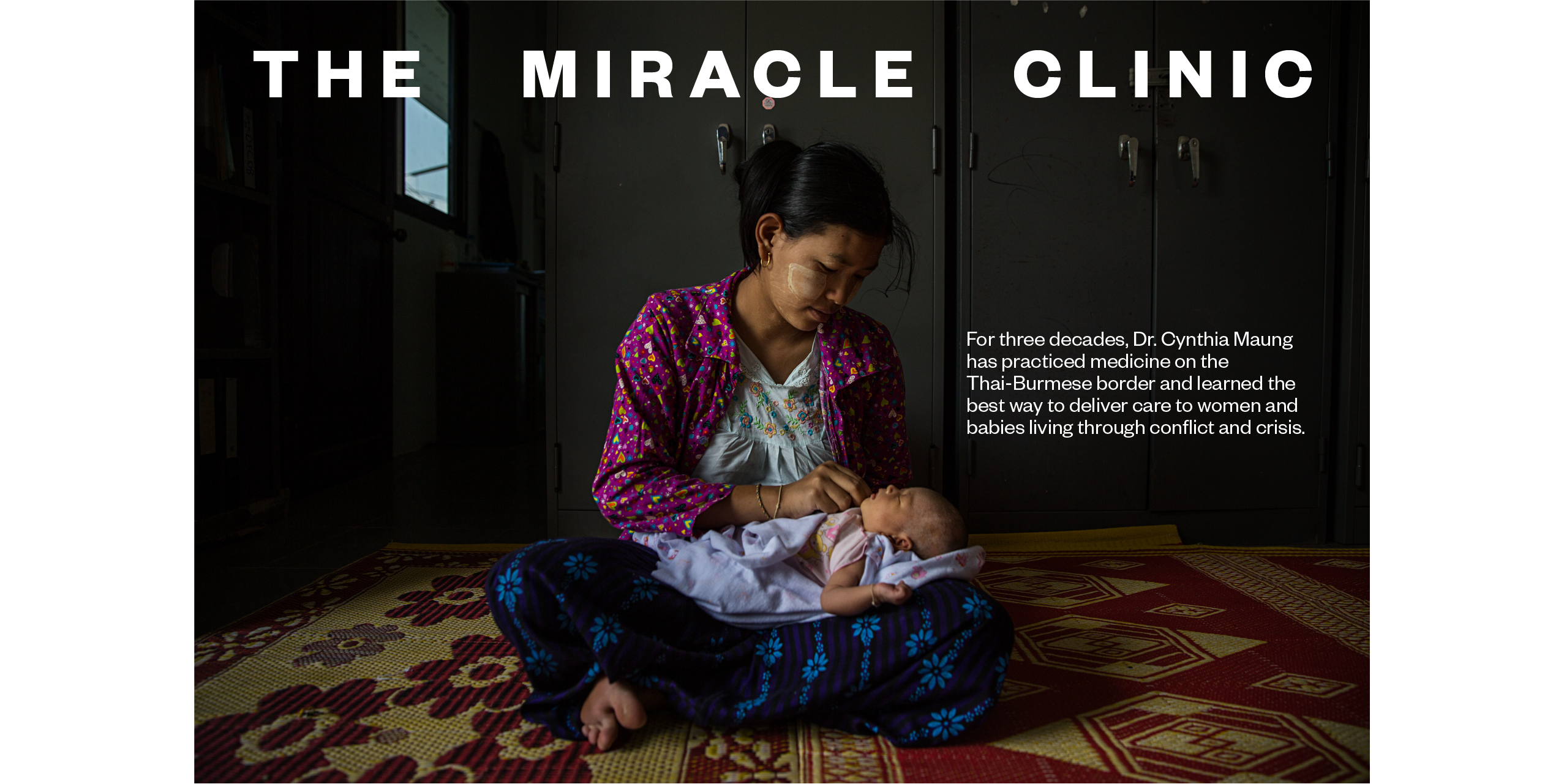
The “miracle clinic” is not easy to find. A few miles east of the Myanmar border, down an unmarked road surrounded by farmland outside the Thai town of Mae Sot, a cluster of tiny restaurants appears like an oasis, selling noodles, cold drinks, and snacks. Behind the shops, a gaggle of motorbike taxi drivers in bright orange vests rest in the shade waiting for their next fare. Nearly everyone passing by seems to have a young child, a baby, or one on the way.
A bit further along, the entrance to the clinic is marked by a high white gate and a small gold plaque that leads to a narrow driveway, which ends at a Buddhist shrine bedecked with flowers and beverage bottles. Behind the shrine, the full scope of the compound reveals itself: a warren of pleasant-looking, white-washed buildings with signs in Burmese and English. Patients and their families mill about wearing longyis (a sarong-like garment) and thanaka (a yellowish-white paste made from ground bark, meant to provide sun protection), their flip-flops scattered around shoe racks stationed outside each building.
It’s a calm scene, and it belies the vital role the Mae Tao Clinic has played for nearly three decades in the middle of the world’s longest-running civil war. Around 350 people arrive here every day seeking all kinds of care — ophthalmology, surgery, acupuncture — but maternal health is Mae Tao’s specialty. Since 1989, it’s helped tens of thousands of women through healthy pregnancies and births, serving generations of Burmese migrants and refugees in both Thailand and Myanmar with nowhere else to turn. Mae Tao provides access to trained staff, life-saving equipment, and resources like infant vaccinations and birth certificates for free. The record year for deliveries was 2012, when 3, 500 babies were born. Patients call it the “miracle clinic” because it seems too good to be true.
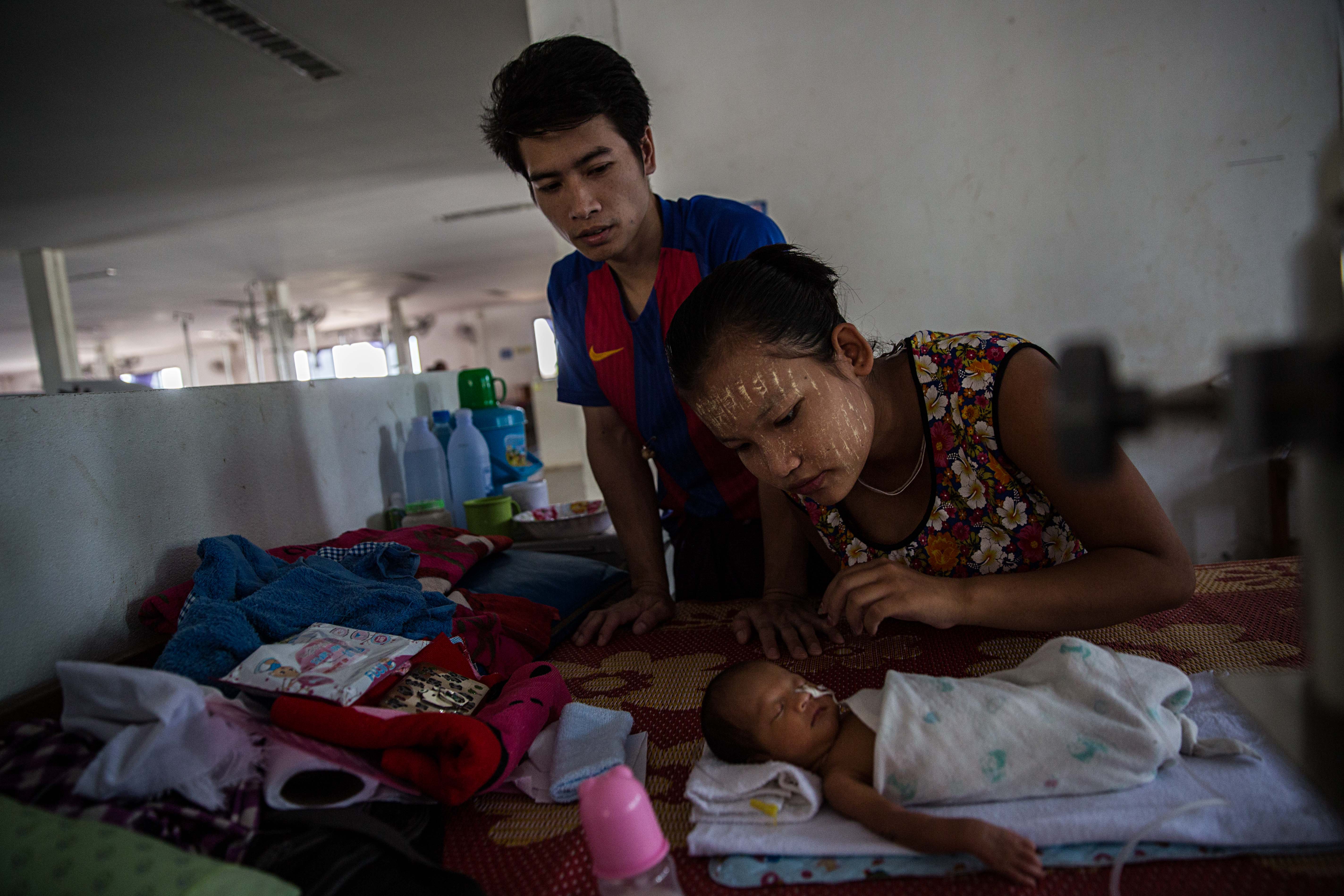
Since Myanmar gained independence from Britain in 1948, the ongoing conflict has killed 130, 000 people, displaced millions, and destroyed the country’s social infrastructure, including its healthcare. In the east, decades of fighting between the government and ethnic opposition groups has sent refugees pouring across the Thai border seeking a better life. On the opposite side of the country, the ongoing Rohingya crisis has sent more than 950, 000 refugees into Bangladesh since 2015.
The maternal healthcare options are dire for Burmese women in the Thai border region. Myanmar has just six doctors for every 10, 000 people, limited equipment and supplies, and no social safety net to help poor people afford medical services. Maternal mortality rates across the country are high, but in rural areas affected by conflict, rates are more than double the national average and on par with the worst in the world.
Migrants and refugees everywhere face barriers to healthcare as displacement globally has reached an unprecedented scale: 65.6 million people are forcibly displaced worldwide, including 22.5 million refugees, and there are 250 million international migrants. This mass movement of people has profound public health implications, with a disproportionate impact on women and children.
Today, it’s estimated that between 1.9 million and 3 million Burmese live and work in Thailand (including around 100, 000 refugees living in camps), mostly holding low-skilled jobs in industries including farming, fishing, construction, manufacturing, and domestic services. Some are documented, but many are not. This is particularly true in Mae Sot, where the border marks the busiest land-crossing between the two countries. While Thailand has low rates of maternal mortality, migrant women still avoid the formal healthcare system because of poverty, discrimination, language and cultural differences, legal status, and cost.

These are challenges that the Mae Tao Clinic’s founder, Dr. Cynthia Maung, understands intimately. She herself fled to Thailand from Myanmar in 1988 and witnessed firsthand the immense need for doctors and other caregivers in the border region and refugee camps. “We heard of families who had to carry women for many hours from their homes to a hospital, and many women died in the rainy season or when the fighting was more difficult, ” Maung told me when I visited Mae Tao earlier this year. “Many women were suffering like that. At the same time, women were dying giving birth at home.”
She established a small, informal health clinic in Mae Sot the following year, starting out by providing medical referrals to Thai health facilities and NGOs and then serving as a base to coordinate emergency relief in Myanmar’s Karen State, where conflict roiled just across the border. Over time, the clinic grew into the comprehensive healthcare network Mae Tao is today — including a dozen different departments, mobile medic teams, health worker training programs, and a hospital referral system. Because it’s run by Burmese refugees, for Burmese refugees, patients know they won’t be turned away, discriminated against, or told there are no supplies or staff to help them.
Maung’s impact goes far beyond the walls of the clinic. Along with its partners, she has helped train upwards of a thousand health workers over the years who use their knowledge and skills to serve what are essentially forsaken communities in Myanmar’s east. Maung said these health workers handle a majority of maternal and child health cases in areas affected by conflict. Last year, she estimates, they helped deliver 10, 000 babies.
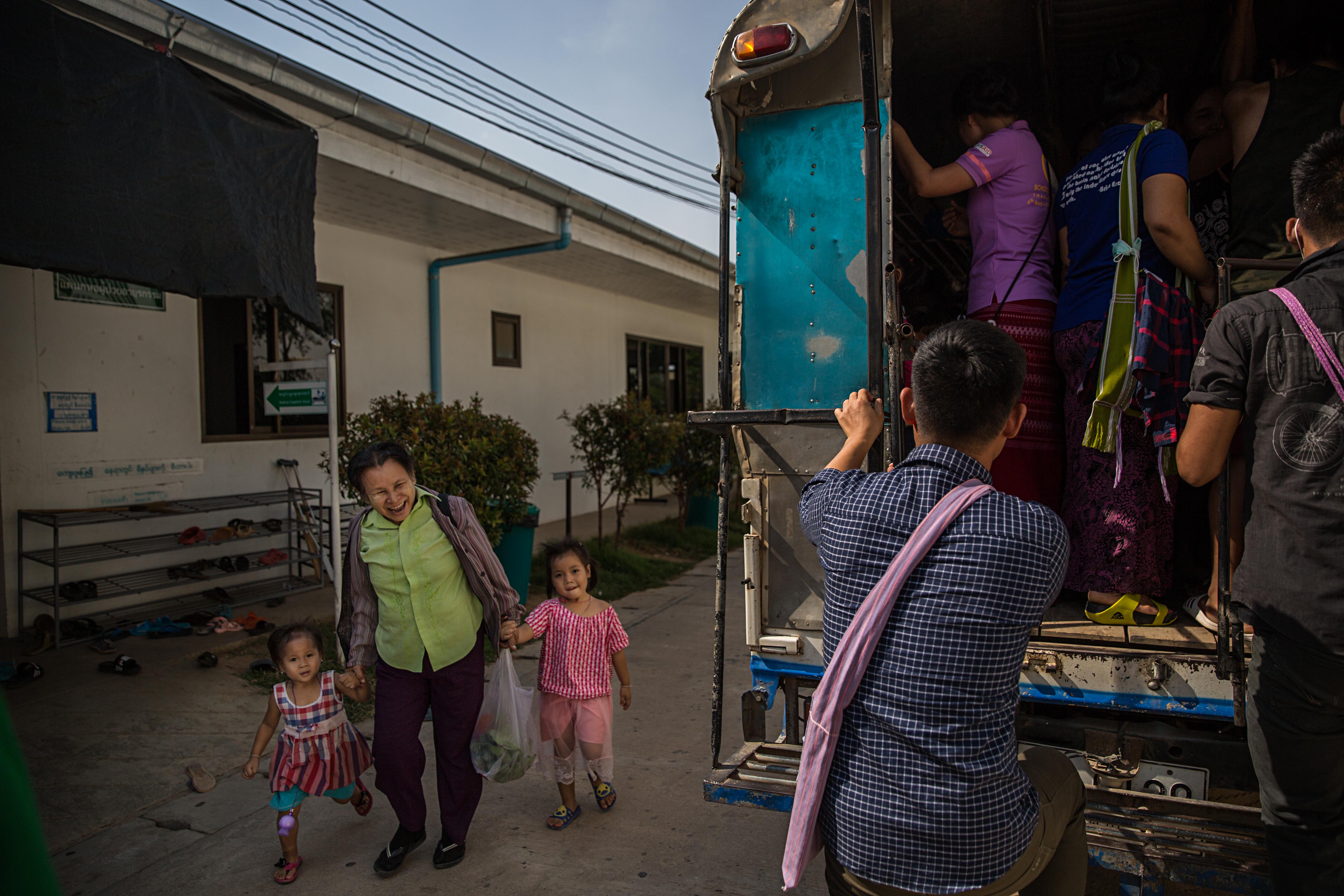
Maung wears her graying hair pulled back in a low ponytail and wears a scrub top and longyi around the clinic. She is unassuming and soft-spoken, but there’s a steely magnetism under the “kind auntie” exterior. She has won dozens of humanitarian awards over the years, including a Nobel Peace Prize nomination in 2005 as part of "1,000 Women" who were jointly nominated. Her time these days is dedicated to advocacy and administrative work, but she retains the aura of a healer. Everyone calls her “Dr. Cynthia.”
The reason for the clinic’s growth, she says, is her community-led approach to healthcare work in a conflict zone. Most of the Mae Tao staff I met when I visited the clinic in February grew up in one of the refugee camps along the Thai border and have worked at the clinic for their entire adult lives. They told me stories about how their villages were “cleared” and family members murdered by the regime. One of the clinic's senior managers fled with her family to a refugee camp in Thailand only to have it burned down by insurgents.
“Our program is led by local people,” Maung said. “They have ownership. NGOs come and go. For long-term sustainability, building a local network is very important.”
Refugee health programs are almost always operated by U.N. agencies, NGOs, and governments. The health professionals are usually a combination of people from the host country, expats, and NGO staff, and their relationship with patients is fundamentally temporary. Turnover can be high and trust takes time to build. Even when these organizations employ refugees as outreach workers, it’s rare to find a health system that is entirely founded, operated, and staffed by refugees.
The International Rescue Committee, which for several years provided the Mae Tao Clinic with financial and operational support, says it’s the first and only example of a refugee-led model across the committee’s work in 40 countries.
“What is unique about Dr. Cynthia’s clinic is the sustainability, ” said Rita Nehmé, who works in reproductive health policy for the organization. “The fact this single clinic has been there for 30 years and not just saw huge demand but met those demands is pretty unique.”

The Mae Tao maternity ward is a large, airy building with high ceilings, lavender curtains, and rows upon rows of beds that resemble summer camp bunks. When I visited, nearly all were occupied by women who were about to deliver or had recently delivered, the former eyeing the latter with a mix of longing and envy. I expected the brimming room to feel hectic, but labor can be a slow process. Most of the women passed the time napping, arms curled around their bellies, or ponderously ambling around the room.
A large whiteboard logged the birth time for each baby born in the past few days, along with its name, birth weight, mother’s name and age, and how many children she had. The mothers ranged from 18 to 38, first child to seventh. A small two-bed exam room with an ancient ultrasound machine served as an ante-chamber to the delivery room — a gleaming white expanse with metal equipment and four navy blue delivery beds. I was warned it could “get messy,” especially if three or four women were in active labor at once.
The well-equipped room stands in stark contrast to the clinic’s origins, and from what Maung thought her life’s work would be. Maung was born in 1959 in Yangon (formerly Rangoon) and grew up in Mawlamyine, a coastal city at the top of Myanmar’s eastern tail and directly west of Karen State. Her family is ethnically Karen and she was one of six siblings. She’d wanted to be a doctor since she was young and her father, a health assistant, brought her into the field with him to treat TB and malaria patients.
She entered medical school in 1980 as Myanmar’s student movement was gaining momentum. After graduation, she worked in a series of hospitals and clinics and was alarmed by how few resources they had. Facilities ran on old, broken equipment and reused supplies. Yet people were selling everything they had to pay for care.
In 1987, she took a job in Eain Du village in Karen State, which sits on the main transit route between Hpa-An, the state capital, and Myawaddy, the border town across the river from Mae Sot. She worked there until the military seized power on Sept. 19, 1988. Maung had participated in pro-democracy organizing efforts, which meant her life was at risk. Activists were “disappearing, ” being imprisoned, and killed.
On Sept. 21, Maung and 14 of her colleagues set off on a 10-day journey to the Thai border. They traveled mostly at night to avoid detection. Along the way, they administered whatever healthcare they could to people in the villages they passed — people who had never been to a hospital or seen a health worker before.
When Maung first arrived in Thailand, she worked in and around refugee camps treating people who had fled the fighting. She moved to Mae Sot in November that year and set up a makeshift community center where refugees could go for a place to stay or medical referrals. A year later, a local Karen family offered her the use of a rundown wooden building on the outskirts of town with dirt floors and five beds to turn into an actual clinic. The only medical supplies available were those she had carried through the jungle in a woven bag: a stethoscope, a pair of scissors, two pairs of forceps, a thermometer, a blood pressure cuff, one medical textbook, and a few packets of basic medication. She and her small team sterilized instruments in a rice cooker.
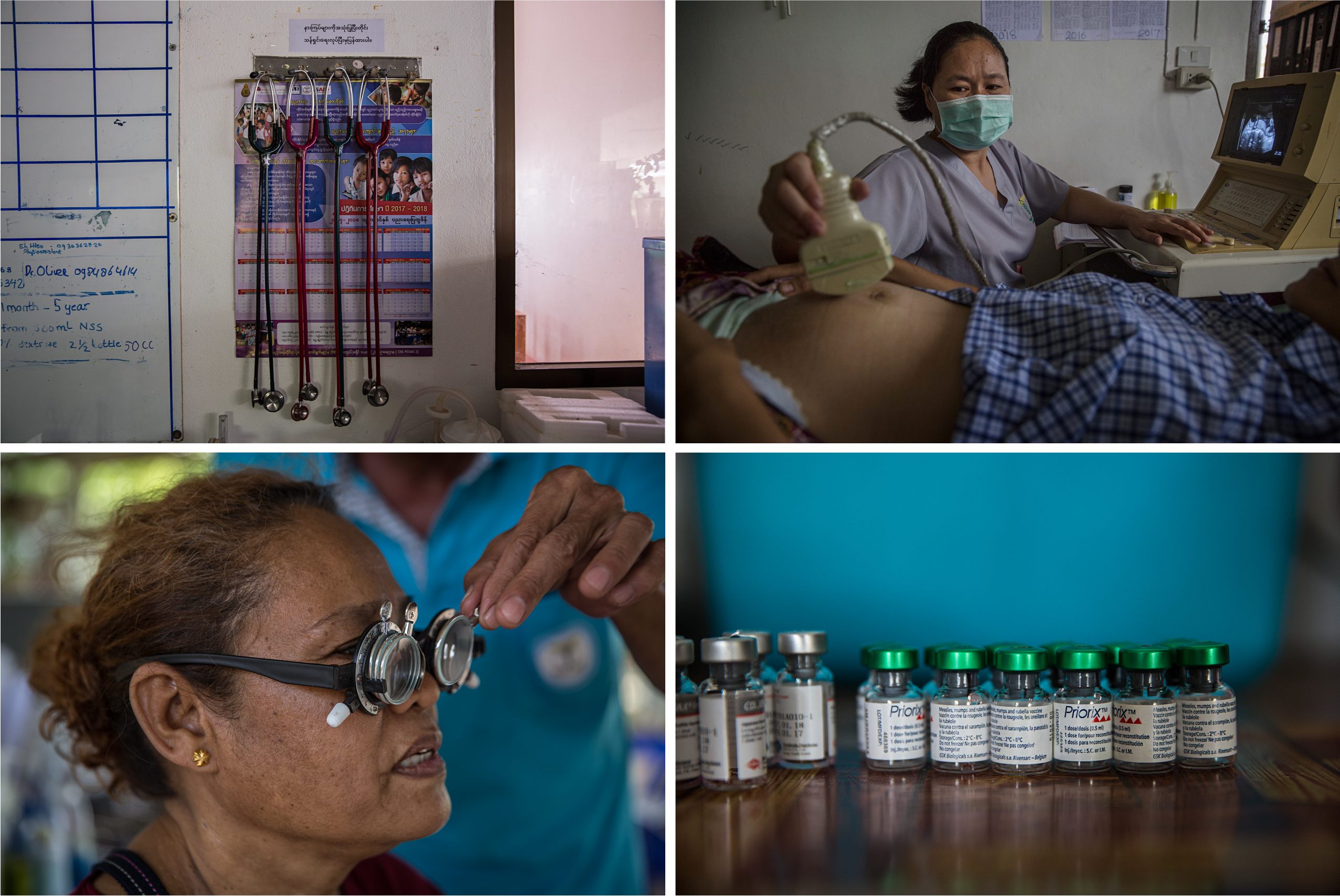
The clinic was meant to be temporary, but the conflict worsened. Maung stayed, and as people in the refugee community began to get married and start families, the need for maternal health services grew.
“When we started arriving on the border, most of the medics were men, ” Maung said. “They were military medics who knew how to treat injury or malaria, but with no special attention for women and children. Women were delivering at home with no birth attendants or antenatal care.”
It didn’t take long for expectant mothers to begin arriving at the clinic in a steady stream at all hours of the day and night. Back then, reaching the delivery room required climbing a ladder— no mean feat for a woman in labor. The clinic delivered around 150 babies a year in the mid-’90s and built a ground-floor delivery room in 1995, followed by a second one soon after. In 2001, they got funding for a new facility with two dozen beds, but they quickly outgrew that as well. Finally, in May 2016, the clinic opened a purpose-built compound with the capacity for more patients and programs, including the 52-bed maternal health unit.
The unit is the clinic’s largest, and its staff delivered 2, 500 babies in 2016. They also performed 10, 040 antenatal screenings and 4, 527 family planning appointments, and saw 355 patients for post-abortion care. “Ninety percent of migrant women [in the Mae Sot area] used to deliver at home, ” Maung said. “And now, 90 percent deliver at a facility.”
One afternoon, I sat down to talk with San San Win, a 32-year-old woman from rural Bago, an area northeast of Yangon, who occupied bed No. 7. Beds 1-10 are reserved for mothers whose newborns need extra care, and a small room behind the nurse’s station held two incubators for babies who were born prematurely. Win’s son, Thin Tharoo, was no longer in one of the incubators, but he remained hooked up to a massive green oxygen tank that resembled a ColdWar–era missile. Win and her husband, Aung Win, sat on beds facing each other, their son and the cumbersome tank between them.
San San Win has two children from a previous marriage, but Thin Tharoo is her first child with Aung Win, who is an agricultural worker in the Mae Sot area. He has a work permit, but she is undocumented. She gave birth to her first two children at home in Myanmar with a traditional birth attendant, or TBA. In Myanmar’s rural and remote regions, birth attendants are the main providers of care at birth. Their practice is based on traditional knowledge passed down in the community and through apprenticeships, but most have not gone through formal healthcare training. Certain practices, like pushing on a laboring woman’s stomach or using bamboo to cut an umbilical cord, can be deadly.
“TBAs in the village don’t have medicine or instruments or equipment; they don’t know about immunizations or do counseling before to know if things are good or bad, ” Win said, when I asked why she came to the Mae Tao Clinic. “But [in Thailand] I can’t go to the hospital because I don’t have legal documents and we don’t have any money.”
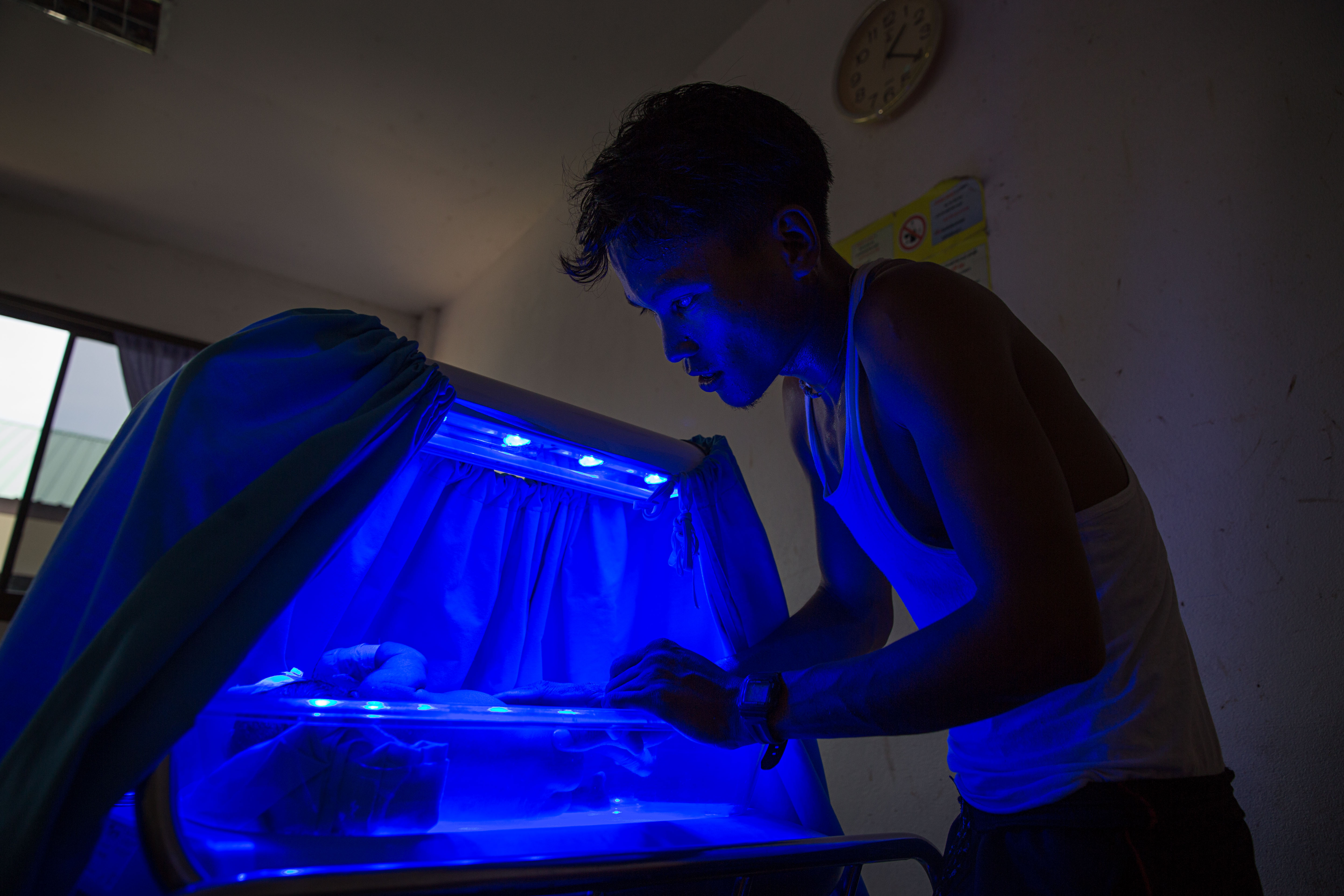
Win visited the clinic for the first time when she was four months pregnant and came back every month for a follow-up. Everything seemed to be OK. Both she and the baby were healthy and the delivery proceeded normally. Then about two hours after she gave birth, Thin Tharoo turned blue. He was struggling to get enough oxygen.
“He had blue under his eyes and on his hands and could not breathe very well, ” Win recalled, looking at her husband with wide eyes. “We didn’t know the baby would have a problem. If we didn’t come to the clinic and the baby had a problem...”
The “if” descended heavily on the corner. The difference between giving birth at the clinic and giving birth at home, in this case, was life-and-death. MTC had equipment and staff members trained in emergency obstetrics who could act fast and handle the crisis. The Mae Sot hospital, if needed, was less than five miles away. Win wouldn’t have had access to the same resources and level of care back in Bago.

Childbirth in crisis conditions can be as dangerous as gunshots and landmines. One in five women of childbearing age in crisis situations is likely to be pregnant, according to the United Nations Population Fund. Sexual and reproductive health is a leading cause of death, disease and disability among displaced women in this age group. For women in countries affected by conflict, the estimated lifetime risk of maternal mortality is 1 in 54, compared to 1 in 76 for the developing world and 1 in 8, 000 in industrialized countries.
Beyond contending with violence, the greatest reproductive health challenges in conflict zones are finding skilled providers, stocking supplies, getting women to access services, and funding all of the above, the International Rescue Committee’s Nehmé said.
The Mae Tao Clinic provides more than 110, 000 consultations a year across all its departments. But even with that reach, for every patient who can make it to the clinic there are hundreds of thousands Maung would like to serve who cannot. For people in the isolated east of Myanmar, and the 644, 000 internally displaced persons across the country, healthcare is largely out of reach.
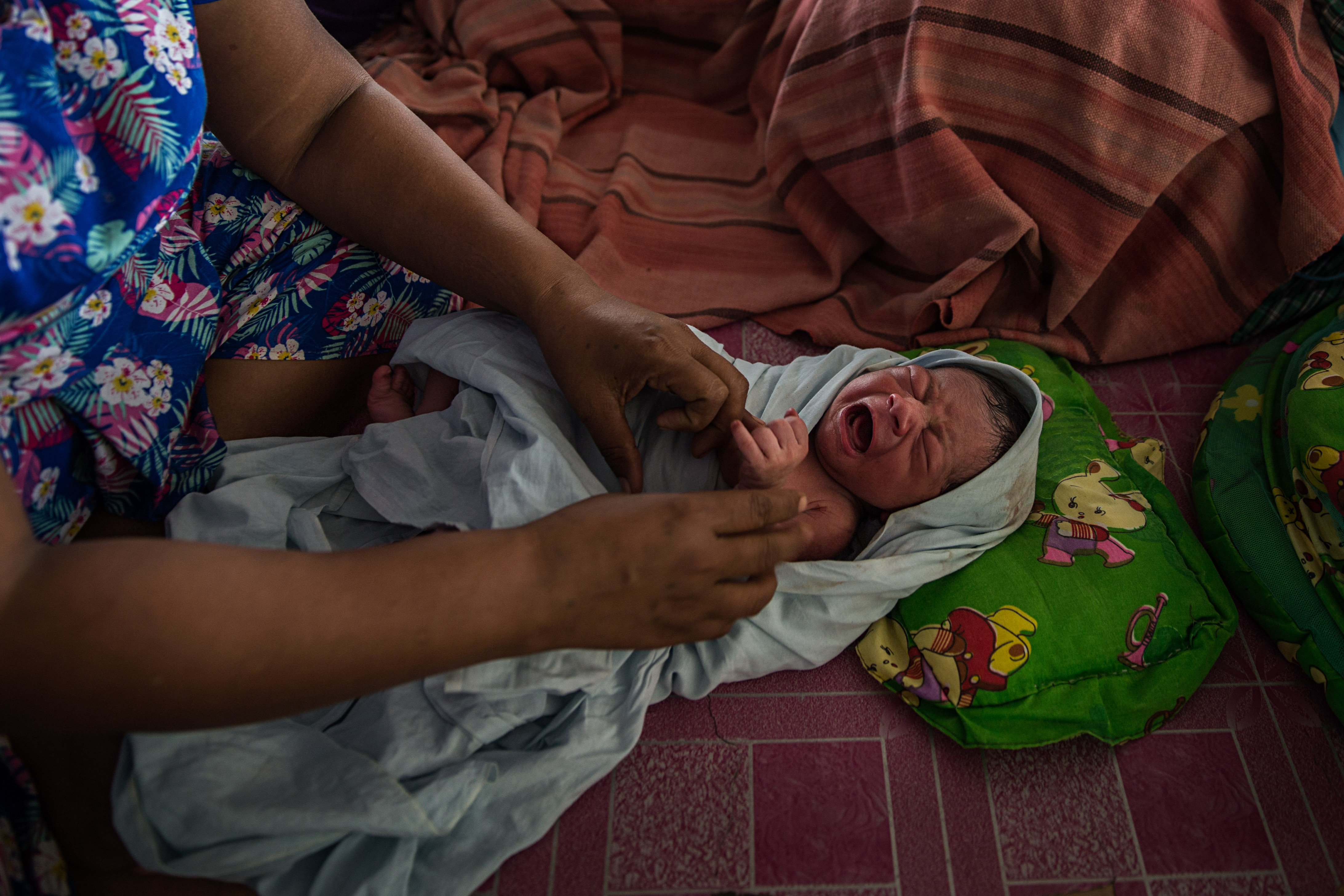
Faced with a dire shortage of doctors and nurses, Maung started training people herself in the early ’90s through informal discussions at the clinic in the evenings. Fellow refugees learned basic physiology and practiced medical skills, growing the ranks of people able to provide acute treatment and skillfully assist women in childbirth.
Those evening discussions in physiology and first aid ultimately evolved into a broad training program with multiple tiers and specialities, including emergency obstetrics. This has had an enormous impact overall on childbirth in the region. Mae Tao partners with eight ethnic health organizations in Myanmar, including Karen, Mon, and Shan groups, who send representatives to Thailand to undergo health-worker trainings every year. The training to become a midwife takes two years, including practical experience. The midwives can then expand the network by holding their own trainings back home to educate birth attendants. More than 1, 400 people have graduated from the trainings to date.
Naw Kyi Htoo has been a maternal and child health worker in Karen State for 30 years. She also acts as a trainer, and has come to the clinic for follow-up training every year for the past 15. “Maternal death is a big problem in Karen State, ” she said. “If we know early, the patient can survive, but if we don’t, they cannot survive. [Emergency obstetrics] is very difficult on the Burma side.”
Htoo spends most of her time traveling around in mountainous backcountry. She helps delivers between 70 and 80 babies a year, mostly home births, through a referral network. Birth attendants in villages let her know how many women are pregnant and she visits those patients’ homes for prenatal screenings. She tries to be present at as many births as possible, but it can take a full day of travel, on foot, to get to some of the villages. Others are inaccessible during the rainy season.
When Mae Tao first deployed mobile medic teams in the early ’90s, demand was so great that Maung established six satellite field clinics that could provide more stable, consistent care. Within five years, the military had destroyed all but one. Distressed but undeterred, Mae Tao and its partner organizations formed “Backpack Health Worker Teams” in 1998. These groups of mobile medics ventured to dangerous areas where medical care was nonexistent, training and restocking at the clinic in Thailand every six months or so.
There are still few physical clinics in eastern Myanmar, so the backpacker teams and mobile medics like Htoo are key to providing care there. In 2016, they targeted a population of 280, 000 with no other access to medical services.
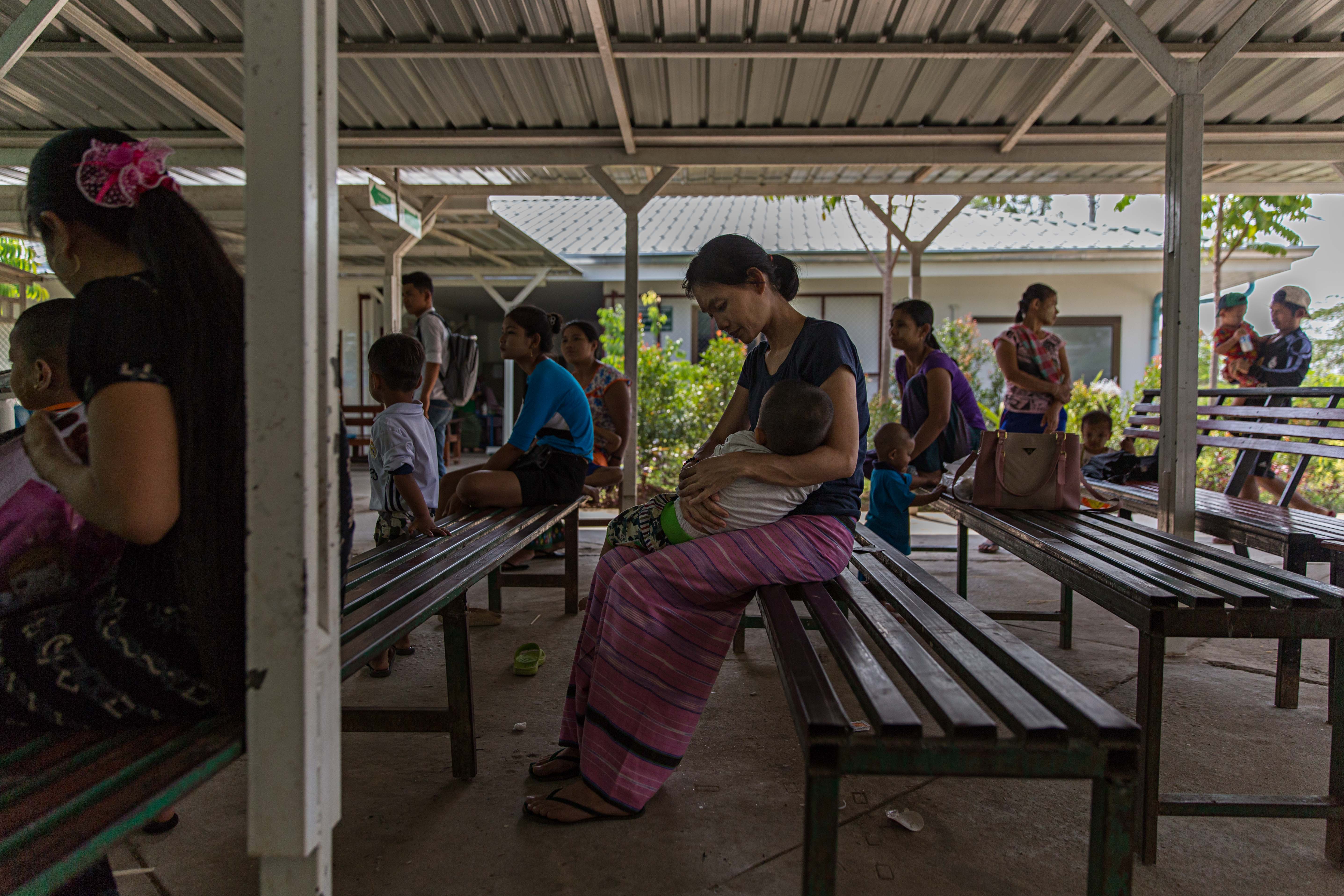
Following a multiparty election in 2010, Myanmar “rejoined the international community” after decades of harsh military rule and isolation. The country shifted toward democracy, and tenuously toward peace. In 2015, the government signed a ceasefire with eight of 15 armed ethnic groups, including the Karen National Union. This opened up the possibility that ethnic health organizations could work together with Myanmar’s Ministry of Health to build up health infrastructure, but the peace is fragile. More than a half century of conflict has carved out a chasm of distrust. Moreover, conflict is still ongoing in Kachin and Northern Shan state, and on Myanmar’s western side, the genocide and displacement of the Rohingya is considered one of the worst human rights crises of the 21st century. Ethnic minorities in Myanmar remain understandably wary of letting the government into their territory, even if it could mean better access to vaccines, equipment, or supplies.
One of Maung’s top priorities right now is getting Myanmar’s government to recognize her trained ethnic health workers as accredited. Accreditation would allow them to continue their work in an official capacity and signal the government’s willingness to collaborate. If there is ever going to be “convergence, ” in NGO parlance, between the government’s health systems and the ethnic health systems, maintaining continuity and community ownership will be essential. People won’t go to health facilities or allow midwives into their homes if they don’t trust who is delivering the care.
“There has been no communication between government health workers and ethnic health workers before 2010, ” Maung said. “The conflict has lasted for 60 years, so there’s a lot of suspicion. If the health workers who have been working in the conflict zone for so long are not recognized, people will lose the trust with the government and the community will suffer.”
Maung hopes the Thai and Myanmar governments will one day be able to provide care comprehensive enough that Mae Tao no longer has to fill the gaps. She doesn’t expect that to happen for a decade at least, if it happens at all. So as the peace process inches forward, babies are still being born, and she is determined to make sure there is always someone there to catch them.
Reporting in Thailand was supported by the International Reporting Project .
Rebecca Grant is a freelance journalist based in Brooklyn. She writes about reproductive rights.

